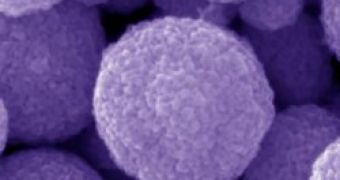Current solar cells available on the market have a conversion efficiency of about 25 percent. However, these are expensive silicon-based cells; dye-sensitized solar cells are much cheaper, but are half as efficient as silicon-based cells. Researchers from University of Washington believe that they can make dye-sensitized solar cells more efficient with the help of porous spheres in a popcorn-ball design.
"We think this can lead to a significant breakthrough in dye-sensitized solar cells," said lead author Guozhong Cao, a University of Washington professor of materials science and engineering.
The first dye-sensitized solar cells appeared in the early 1990s and began to be rather popular due to the fact that they were flexible, cheaper and easier to manufacture. However, dye-sensitized solar cells are very inefficient. The problem lies in the design of the light-absorbing grains. Since larger grains have a bigger surface area, they are able to absorb more light, but are limited by the wavelength of visible light that is absorbed.
"You want to have a larger surface area by making the grains smaller. But if you let the light bounce back and forth several times, then you have more chances of capturing the energy," explains Cao.
One of the techniques usually used by researchers to enhance the efficiency of dye-sensitized solar cells is to mix large light-absorbing grains with smaller ones. The University of Washington researchers, on the other hand, preferred to use grains of similar size, 15 nanometers, clumped into structures 300 nanometers in diameter. The light hitting the large clumps of grain would be scattered throughout the solar cells towards the internal surface where light is absorbed.
By creating this special configuration, each gram of material has a surface area of 92 square meters, boosting the conversion efficiency of dye-sensitized solar cells to 6.2 percent. "The most significant finding is the amount of increase using this unique approach," Cao said.
During the experiments, researchers used zinc oxide grains. Usually, dye-sensitized solar cells imply the use of titanium oxide, which is very easy to manufacture, chemically stable and can reach efficiencies up to 11 percent.

 14 DAY TRIAL //
14 DAY TRIAL //